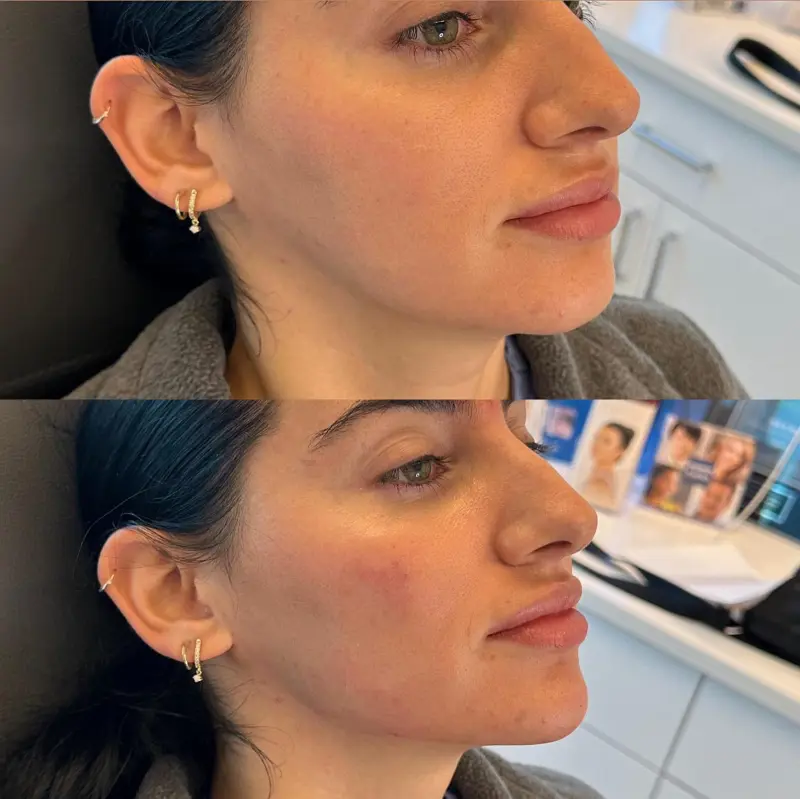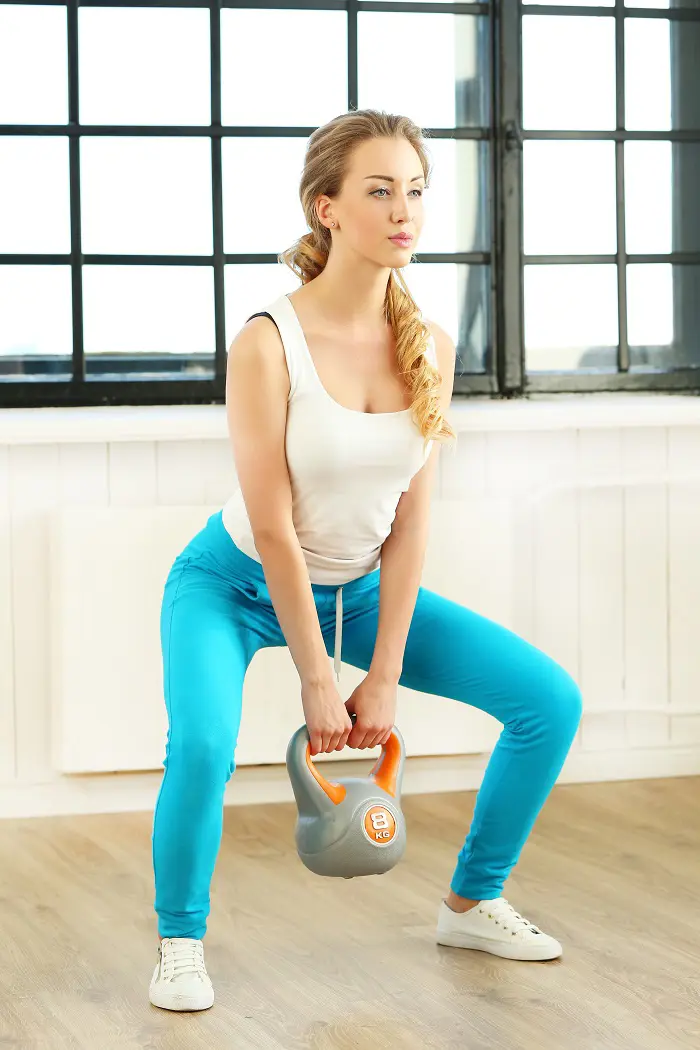10 Deep Breathing Exercises For Anxiety, Stress And Anger
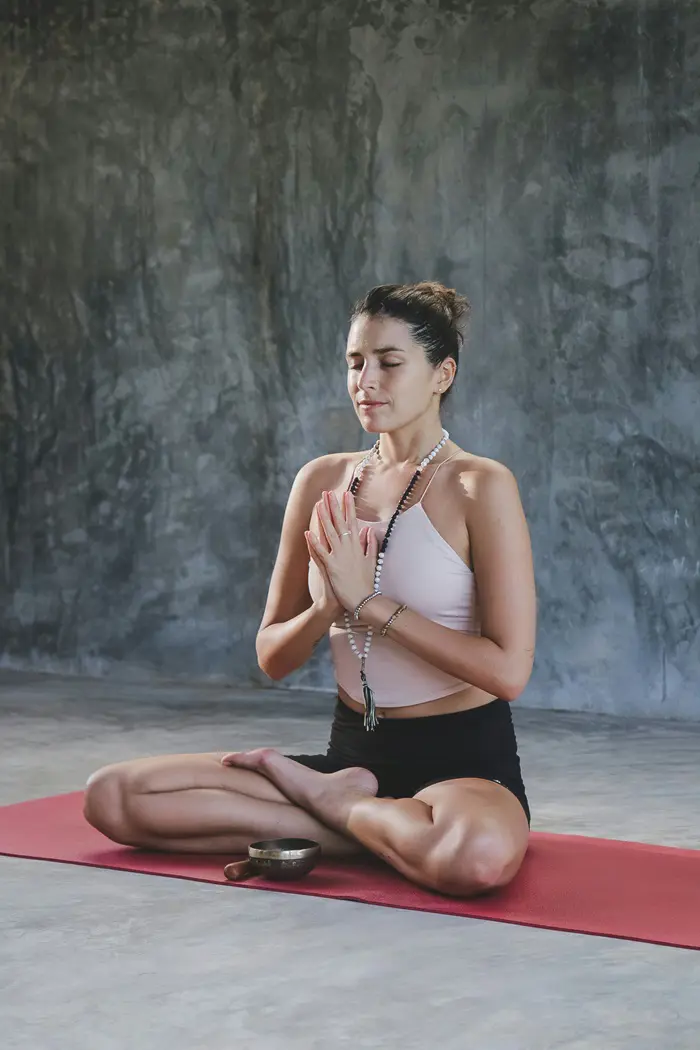
Deep breathing exercises are a perfect solution to lower the increasing stress of daily life. They are easy to perform and do not require anything except for a small silent space. However, choosing the right ones can be a bit challenging.
So we have rounded up 10 best deep breathing exercises that you can try to overcome anxiety and stress.
1. Diaphragmatic Breathing
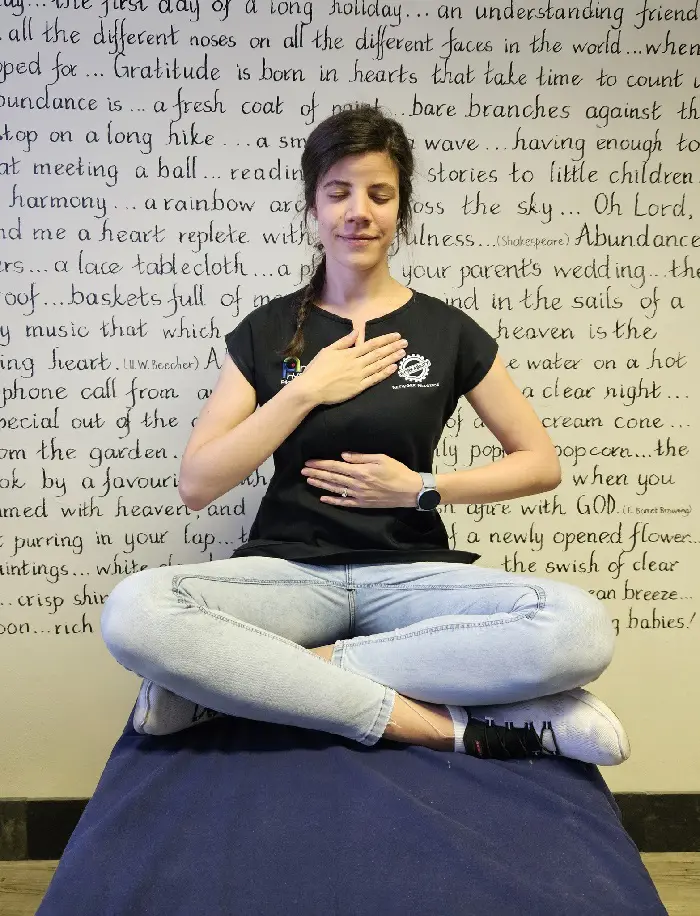
This is a famous breathing technique used to relieve daily life stress. It is performed by using the full capacity of the lung for a full oxygen exchange.
Improved oxygen exchange ultimately helps lower the blood pressure, slow the heartbeat, and reduce the stress hormone level to make you calm.
How To Do It?
- Begin by lying or sitting on the floor with a straight back.
- Bend your knees and place your head on the pillow.
- One of your hands should rest on your upper chest and another just below your rib cage.
- Then, breathe in slowly through your nose and feel the stomach pushing outward with the hand.
- Try to keep the other hand as still as possible, controlling your chest.
- Pucker the lips into a whistling position and slowly exhale through the mouth.
- Do the same for around 5 minutes.
2. Breath Focus Technique
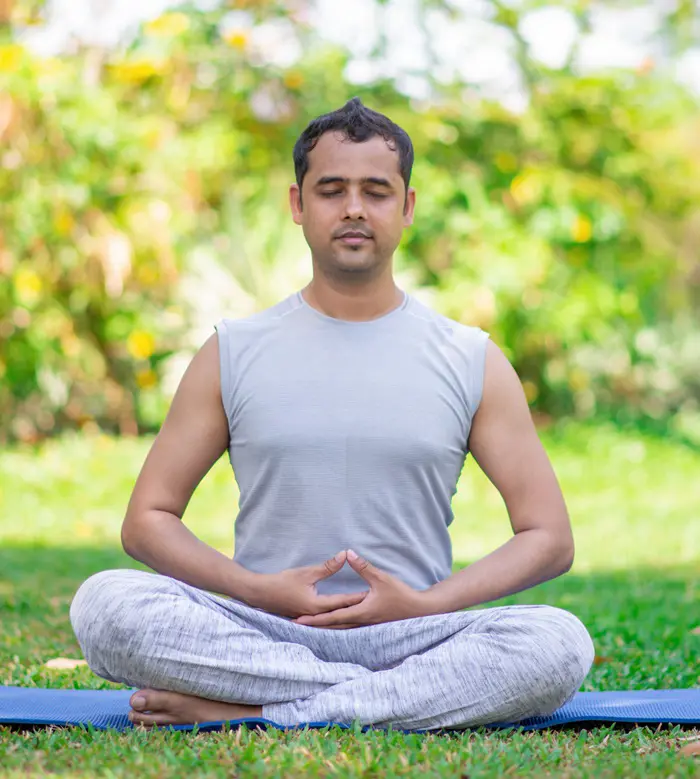
Breath focus is a powerful deep breathing exercise where you completely focus on your breathing. To do that you either use the numbers or a short phrase. Doing this will make the exercise more relaxing.
However, this technique might feel a bit complicated in the initial phases but as you get full control over your breaths, it can do wonders in releasing the stress.
How To Do It?
- Close your eyes and take a few normal as well as deep breaths.
- Inhale through your nose. Exhale through your mouth.
- Focus on the breath. Feel the air going in and out of the nose.
- Your abdomen should expand with every breath.
- After a few breaths, start to imagine the number or phrase in your mind.
- Use them to stay focused throughout to wash away the anxiety you feel.
3. Lion’s Breath

Lions Breath, also known as Simhasana in Sanskrit boosts the energy and helps kick out the tension and stress. It is a unique technique where one makes powerful exhalations with the mouth wide open and roars out loud to sound like a lion.
How To Do It?
- Sit in a kneeling position similar to Vajrasana with both knees together.
- Maintain a straight back and relax your shoulders.
- Spread your fingers and rest the palm in front of your knees on the floor.
- Start inhaling deeply through your nose to fill your lungs.
- Now open your mouth and stick out your tongue towards your chin.
- Keeping the mouth open, exhale with a HAA sound forcefully.
- Move your gaze to look at the space between the tip of your nose.
- Perform this breathing for 2 to 3 minutes each day.
4. Resonant Breathing
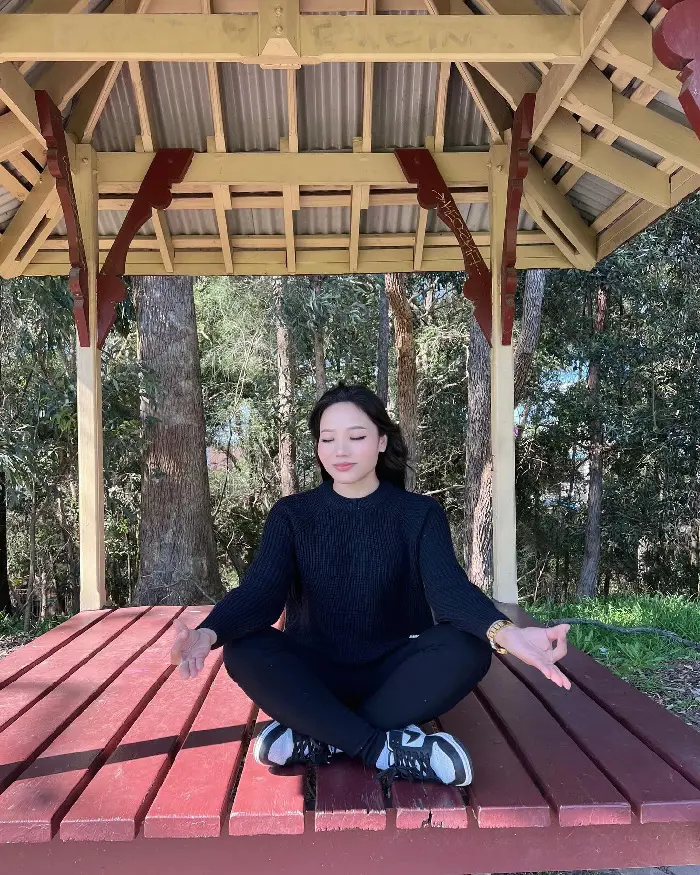
This is another ideal breathing technique to try for a stress-free day. This method is used to balance the autonomic nervous system and regulate the emotion.
In this technique, breathing is done at a frequency of around 5 full breaths per minute. This fast-paced breathing maximizes heart rate variability and reduces stress.
How To Do It?
- Sit on the floor with crossed legs.
- Close your eyes.
- Inhale through your nose, counting up to five.
- Breathe out from the nose, counting to five again.
- Conduct this technique for at least 10-20 minutes daily.
5. Sitali Breath
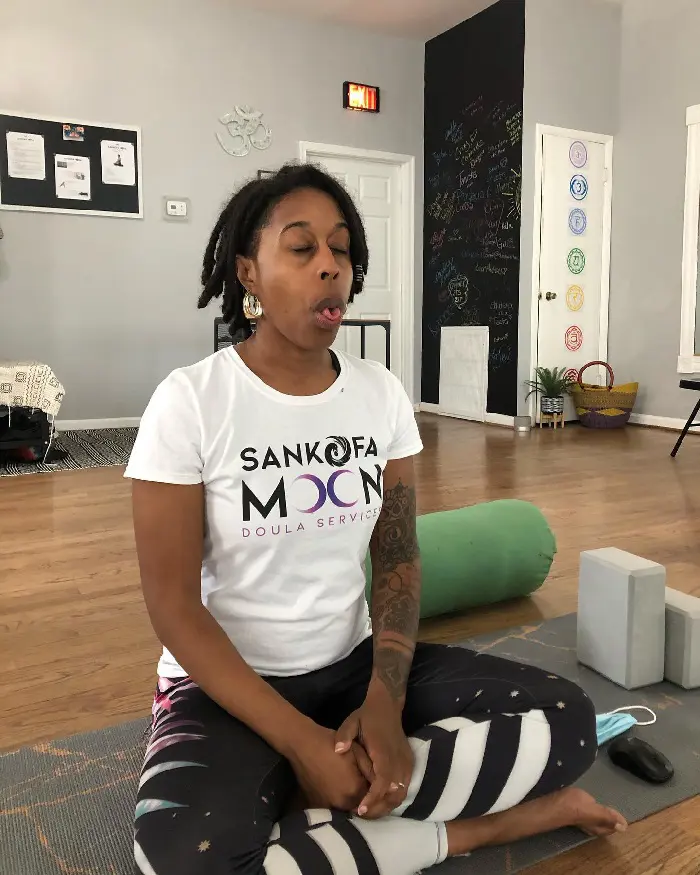
Sitali Breath is the perfect deep breathing form that can be used to cool down the body from the inside. The refreshment received from it can help improve mood and lower the stress level.
This breathing technique is considered one of the best to fight anxiety and depression.
How to Do It?
- Get in a comfortable sitting position and close your eyes.
- Stick out your tongue and curly the sides to form a tube.
- Inhale slowly and deeply through the tube formed by curling the tongue.
- Get the tongue inside your mouth after a full inhalation.
- Exhale slowly through your nose to complete the breathing.
- Do the same for 5 to 10 minutes.
6. Humming Bee Breath
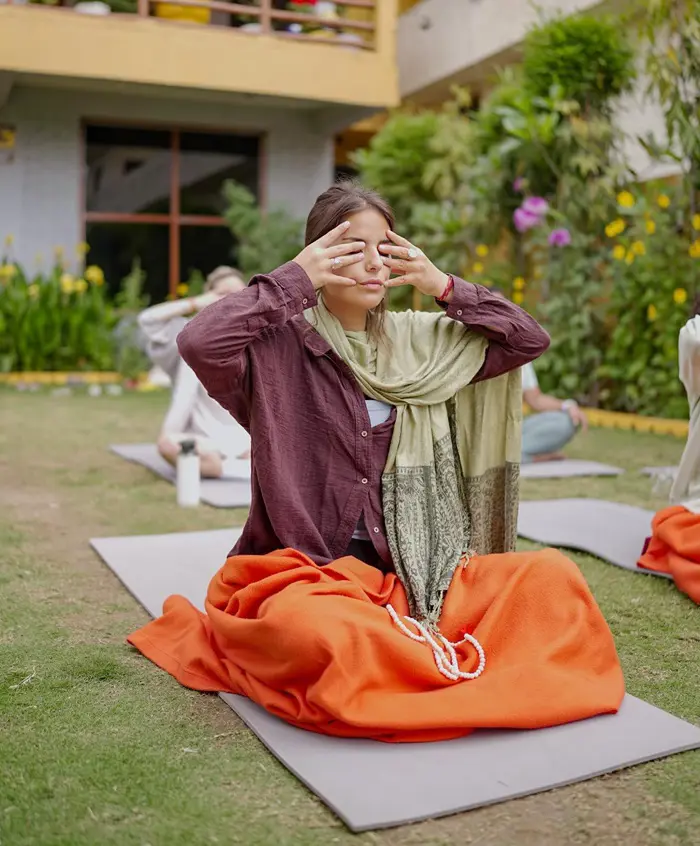
This exercise, from the Indian black bee (the Bhramari), involves moving air out of both nostrils and producing a flowy humming sound. This gives peace of mind and reduces depression.
The soothing hum causes a mild vibration that resonates through the body, promoting tranquility and relaxation.
How To Do It?
- Take a sit on the floor and cross your legs.
- Cover your face with your fingers and seal both ears with your thumb.
- Now, inhale deeply through your nose.
- Exhale from the nose as well making a bee-like humming sound.
- Focus on the sound and the vibration it creates.
- After exhaling, stop the sound and breathe normally for several breaths.
- Continue this for at least 10 cycles and discard all the negative energy.
7. Pursed Lip Breathing

The Pursed Lip Breathing is another slow and easy breathing method. It slows down the breathing and reduces stress. This breathing technique can also prevent you from possible lung diseases if performed on a regular basis.
How To Do It?
- With a straight back, sit on the floor or lie down.
- Let your shoulders loose and breathe in with your nose for two seconds.
- Feel the air moving inside your abdomen trying to fill it with air along with your lungs.
- Pucker your lips, as if you are blowing hot food out, and excrete the breath.
- Take twice as long as you took when breathing in.
- Repeat the same again for nearly 10 to 20 minutes.
- Continue this breathing technique for a few minutes.
8. Equal Breathing

This will make your inhalation and exhalation equal. Equal breathing balances your mind and body and makes it quite easy for you to handle stress and anxiety.
Moreover, it elevates the oxygen supply to both the brain and lungs, which enhances their overall effectiveness.
How To Do It?
- Select a comfortable spot and sit down with a straight back.
- Shut down your mouth and start breathing deeply through your nose.
- Keep the timing of your inhales and exhales equal.
- Do it all again for at least 5 minutes.
9. Alternate Nostril Breathing
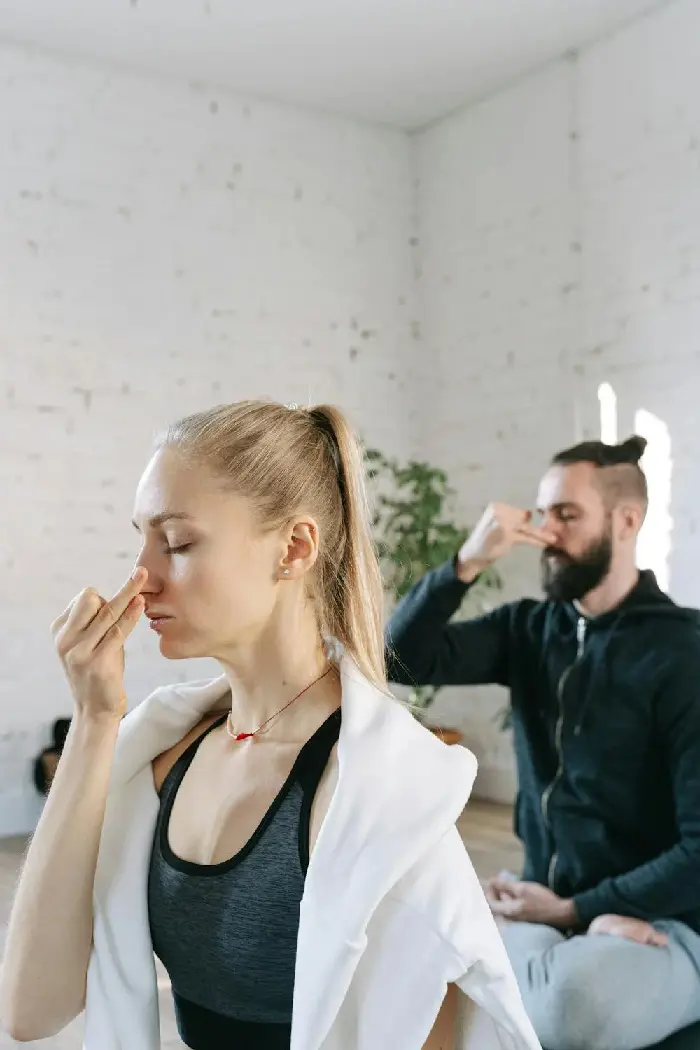
Alternate Nostril Breathing is another type of yogic breathing wherein one breathes through a single nostril while the other remains shut. In Sanskrit, this is also called Nadi Shodhana pranayama.
This can help the cardiovascular system maintain an equal distribution of air between both noses.
How To Do It?
- Find a comfortable spot to sit and close your eyes
- Close your right nostril with the tip of your right thumb.
- Your right-hand ring finger should be near where you are supposed to close the left air nostril.
- Press your ring and little fingers to the minding part of your forehead, with your index finger and middle finger resting between your eyebrows.
- Close your right nostril with your thumb. Inhale deeply and slowly through your left nostril.
- Now, close your left nostril with your ring finger. Release your right nostril and exhale through the right nostril.
10. Box Breathing
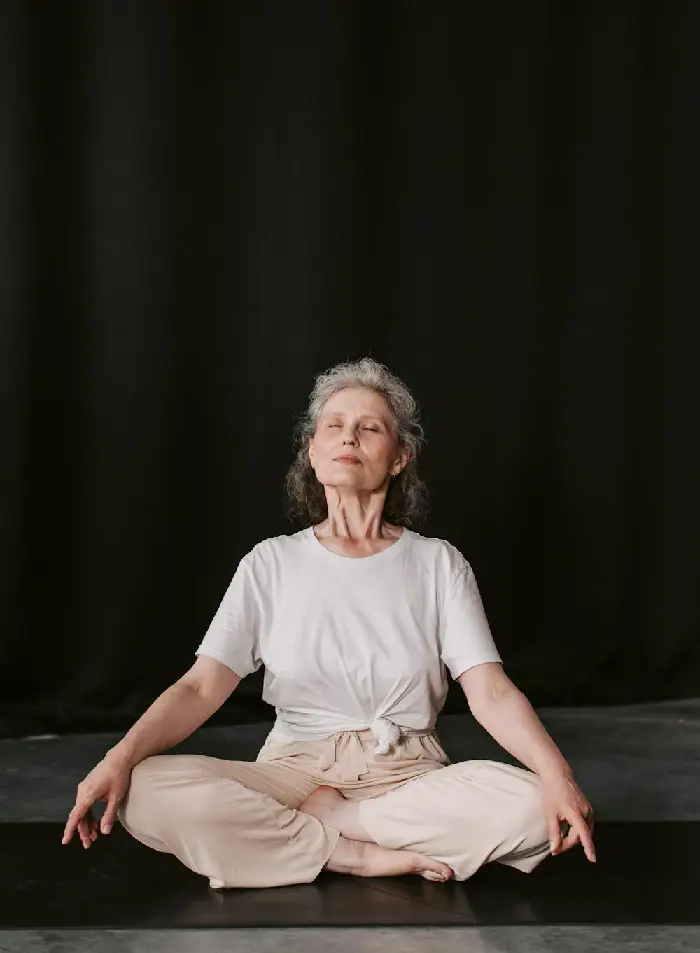
This breathing technique is basically initiated to reduce the anxiety level within just a few minutes. Box breathing is also known as four-square breathing.
It might be the most straightforward of all deep breathing techniques, yet it's one of the most effective for releasing stress.
How To Do It?
- Exhale to a count of four to empty your lungs.
- Let the lungs empty for another four counts.
- Now inhale to a count of four.
- Then, hold the air for another count of four.
- Exhale and repeat the pattern of breathing for as long as you wish.
- Remember to continue the counting unless you are done.
How To Solve Shallow Breathing?

This condition, known as shallow breathing, involves using the chest instead of the diaphragm for respiration. It results in insufficient oxygen intake and ineffective carbon dioxide removal.
The causes for the issue cover stress, bad body posture, and other respiratory ailments. This breathing makes a person more anxious and more tired because it doesn't engage the lungs fully. Correcting this pattern is important in enhancing general respiratory health.
1. Practice Breathing Techniques
As for the shallow breathing issue, it can be challenged through the usage of the mentioned methods of breathing for anxiety. These exercises should be done in the morning and if possible on an empty stomach to have the maximum effect.
Doing this three to four times a day will get your body habitual to deep and right breathing.
2. Engage in Physical Exercise
Physical activities are very useful in enhancing the respiratory system. Jogging or cycling can help in increasing lung capacity and efficiency of breathing during regular physical activity. Aerobic exercises involve engaging the muscles and hence entail the need to breathe more to avail oxygen.
When you do these exercises your body gets used to more rhythmic breaths as you do them. Ideally, try to engage in activities that will assist in the strengthening of the respiratory muscles at least thirty minutes per day. This is another way of avoiding shallow breathing.
3. Consult a Doctor
If shallow breathing persists despite self-care efforts, consider consulting a healthcare professional. You could also visit a doctor when you feel confused regarding a sudden rise in shallow breathing as well.
A respiratory physician can assess your breathing patterns and provide personalized recommendations. They can suggest specific breathing techniques. If underlying health conditions contribute to your shallow breathing, the doctor can address these with medical guidance.
How To Tell If You Are Breathing Properly?
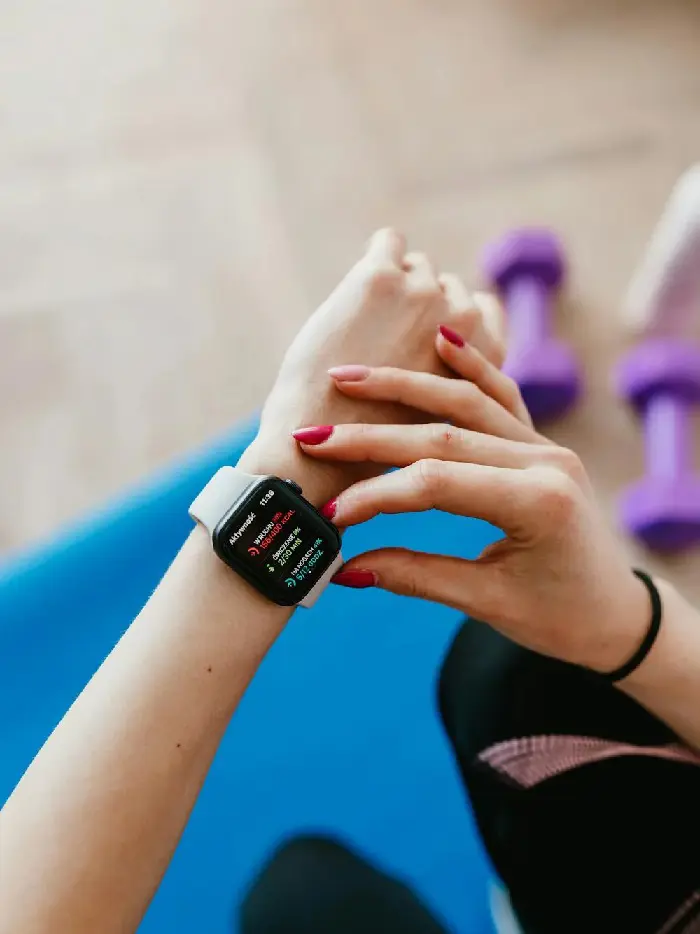
Your general health depends largely on whether you are breathing well or not. Note that this is simple and you will only be required to identify some body parts of yours.
Proper breathing is deep abdominal breathing where your chest rises less than your abdomen. The process should not make you uncomfortable. You can place one hand on the chest while another on the abdomen. The hand on your tummy should move more.
1. Monitor Your Breath Rate
You should watch your breathing rate as well. The normal rates of breathing, while resting range from 12 to 16 breaths per minute.
To test this condition, count your breaths in a minute when you are doing nothing. If your rate falls within this range it means you are breathing normally.
2. Utilize a Breathing App or Tracker
If you want to go for a more sophisticated (and modern) way, a breathing app or tracker can aid you in analyzing your breathing patterns. Many apps are designed to monitor your breathing and provide feedback.
These tools usually contain real-time tracking that enables you to see if you are maintaining a steady breathing rate. Using technology can offer a detailed analysis of your breathing along with personalized tips for improvement.
Some of the popular apps are Headspace, Breathwrk, Breathe2Relax, Paced Breathing, Breathing Zone, and Pranayama Breathing App.
Disclaimer: This article is for informational purposes only. It should not be taken as a medical advice.
Recent posts
Exercises
Exercises
12 Amazing Full Body Dumbbell Workout And Exercises
If you're new to fitness, putting together a full-body workout can feel overwhelming. A solid training program targets strength, endurance, flexibility, and balance while working all the major muscle groups. Luckily, dumbbells are versatile tools tha...
Exercises
11 Effective Jawline Exercises To Try For A Chiseled Face
Jawline exercises can lead to changes in the shape of the face, resulting in fuller cheeks and a more youthful appearance. Exercising the neck, chin, jaw, and other facial muscles leads to sharper cheekbones and a prominent jawline. Improving your ja...
Exercises
15 Best Exercises For Waist To Get A Slimmer Midsection
Smaller waist is a common goal for many women, but it requires a mix of exercise, persistence, and a healthy lifestyle. Waist-slimming workouts will tone and shape your midsection while also improving your overall posture and stability. From easy twi...
Exercises
16 Body Weight Leg Exercises To Strengthen Your Lower Body
Bodyweight training is very accessible, popular, and requires little or no equipment at all. With bodyweight exercises, you can target your lower body muscles in different ways to help build stronger legs. Before jumping into weighted movements, thes...
Exercises
12 Achilles Tendon Stretches To Tone Heel And Calf Muscles
The Achilles tendon runs down the back of the lower leg, connecting the heel bone to the calf muscle. It helps lift the heel off the ground while walking. If you suffer from Achilles tendonitis, gently working out the inflamed tendons can aid in quic...
Exercises
15 Landmine Exercises To Increase Your Functional Strength
A landmine is a barbell anchored to the floor with a weight on the other end. The angle of the bar allows you to apply force vertically and horizontally. Landmine exercises are beneficial for those seeking joint-friendly alternatives to traditional l...

